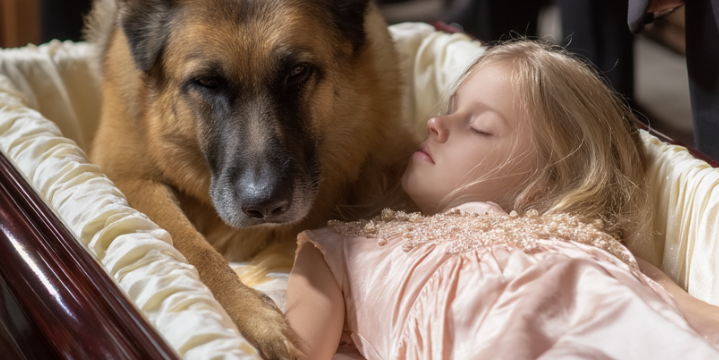Gary and Angela Williams never imagined a quiet afternoon walk along the coast would turn into one of the most surprising moments of their lives. The couple was strolling hand in hand along Middleton Sands Beach near Morecambe Bay when they caught a strong, unpleasant odor drifting across the shoreline. At first, they thought it was nothing unusual—just the smell of rotting fish common on stretches of sand exposed to the tide. But curiosity led them to track the scent to its source, and what they discovered looked nothing like ordinary debris.

Lying there in the sand was a strange, lumpy “stone” with an unusual texture. Though it didn’t look like much at first glance, Angela immediately thought of something she had once read about in the newspaper: ambergris, a rare and valuable substance often called “whale vomit” that is highly prized in the perfume industry. Wrapping the object carefully in a scarf, they carried it home, unsure whether they had stumbled upon a worthless curiosity or something extraordinary.
Once home, Gary placed the lump on his fishing scales. It weighed just over 1.57 kilograms—about the size of a small rugby ball. For comparison, they recalled a story from 2013 when a larger chunk of ambergris, weighing 2.7 kilograms, had been discovered on the same stretch of coast and valued at an astonishing £120,000. Though their find was smaller, experts suggested it could still be worth as much as £50,000.
Ambergris, sometimes referred to as “floating gold,” forms in the digestive system of sperm whales. It is thought to develop when whales consume sharp or difficult-to-digest foods, with the hardened material protecting their intestines. Over the years, this substance solidifies, floats through the ocean, and may drift for decades before eventually washing ashore. Once exposed to sun and seawater, it develops into a smooth, grey, waxy mass, often resembling a rock. Despite its rather unappealing origin, ambergris has a unique fragrance that makes it one of the most sought-after ingredients in luxury perfumes. Its rarity has turned it into one of nature’s most unusual treasures.
For Gary, a 48-year-old engineer, and Angela, a 49-year-old nurse, the discovery was both thrilling and bewildering. “It was a bit of a shock,” Gary admitted, describing how they had been walking in an area of the beach that very few people visit. The object itself, though valuable, gave off a scent that was hard to ignore. “It has a really strong odor,” Gary explained, comparing it to a mix of farm manure and squid. He also noted its unusual feel, describing it as similar to a rubber ball with a waxy surface that sticks to your fingers like candle wax.
Angela, who often enjoys collecting interesting shells and stones during their beach walks, was the first to suggest the possibility that the lump might be ambergris. Gary admitted that without her hunch, he probably would have dismissed it as nothing more than a strange-smelling rock. “She remembered reading about it years ago,” he said. “We thought, why not check before throwing it away?”
The couple has since contacted two experts—one based in France and another in New Zealand—who are helping verify the authenticity of their discovery. They are keeping the lump safe until they receive confirmation, though they have already begun discussing the possibilities. For Gary and Angela, a windfall from such an unexpected source could make a meaningful difference. “If it turns out to be valuable, it could help us buy a static caravan,” Gary shared with a smile. “That would be a dream come true.”
Their find has once again drawn attention to the mystery and allure of ambergris. Though it might sound strange, this rare substance has been treasured for centuries. In history, it was used not only in perfume but also in medicines and even food in some cultures. Today, it remains most valuable to the perfume industry because of its ability to enhance and stabilize scents, giving fragrances depth and longevity. Because ambergris is so rare, buyers are willing to pay enormous sums for genuine pieces, and every confirmed discovery makes headlines.
Local residents near Morecambe Bay were astonished to hear of Gary and Angela’s discovery, with many expressing amazement that something so valuable could be lying unnoticed on the sand. For the couple, the most surprising part is how chance played such a big role. If they had chosen a different path or ignored the smell, they might never have found it. “We take walks like this all the time,” Angela said. “It just goes to show you never know what the sea might bring in.”
Of course, the possibility of selling their find has stirred excitement, but the couple remains cautious. Stories of ambergris discoveries often generate attention, but the market depends on verification and negotiation with buyers, many of whom are located overseas. For now, Gary and Angela are focused on protecting the lump and waiting for official confirmation before making any decisions.
Even as they wait, the discovery has already given them a story to tell for the rest of their lives. For Gary, the most striking part was how something that looked like a piece of garbage turned out to be potentially life-changing. “You never know what’s out there,” he said. “One moment it’s just an afternoon walk, the next you might be holding something worth thousands.”
Whether their find brings in a fortune or simply remains a fascinating curiosity, Gary and Angela are grateful for the experience. It has not only sparked dreams of a caravan and future travels but also reminded them of the hidden wonders that can appear when you least expect them. As Angela put it, “It’s a lesson in keeping your eyes open. Sometimes treasures come in the most unlikely forms.”





